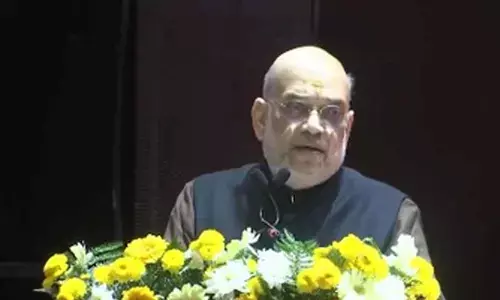New engg courses need prudence

Chukka Ramaiah: New Engineering Courses Need Prudence. Recently all of us read about the moratorium imposed by the UGC on establishing new engineering colleges, new branches or even adding seats to the existing branches for one year to come as there are no takers for 20 to 30 per cent of the total engineering intake in the country.
Recently all of us read about the moratorium imposed by the UGC on establishing new engineering colleges, new branches or even adding seats to the existing branches for one year to come as there are no takers for 20 to 30 per cent of the total engineering intake in the country. Does it indicate that our country’s craze as well as need for engineering is waning? Does it mean that Engineering has lost its charm and potential?
Engineering is as old as human civilisation. The minute we start recalling our ancient engineering marvels, our hearts swell with pride. However, in this 21st century, when engineering is pursued as a highly honorable profession, with the rapid strides in technology, industrialisation and systemic approach, it is the discipline, art, and profession that apply scientific theory to design, develop, and analyse technological solutions. Along with the major basic branches of chemical engineering, civil engineering, electrical engineering and mechanical engineering, it now has numerous other engineering sub-disciplines and interdisciplinary subjects that are derived from concentrations, combinations, or extensions of the major engineering branches .It is a misnomer or a hasty generalization to conclude that engineering has lost its charm or that there are no takers. As I had mentioned many times earlier, prospective engineers from our state make a thorough study and compare the facilities, career prospects, quality of teaching etc. provided in our state with those offered in our neighboring states and as they find that senior faculty handle classes for freshers and tie-ups with industries and placement opportunities are better as there are more industries around, they prefer to study there rather than go by baseless prejudices in favor of our engineering colleges closer home.
Even if we wish to retain the current inflow into our engineering colleges, one of the immediate goals for better results in future, must be to strengthen our faculty.Though the increased number of engineering colleges has also put enormous strain on the availability of qualified teaching manpower, thus affecting the quality of education and employability, employing fresh graduates with very little experience just because they work for a pittance has proved to be counterproductive and it is time we learnt our lessons.
Engineering has ever-fresh potential for growth. Increasing interaction with other departments like biological sciences, physical and nuclear sciences, urbanisation and globalisation have already launched in-depth studies in branches like Bio-molecular , environmental , structural , transport, water resources, agricultural, energy, mechatronics, nano engineering… Our very lives, day-to-day transport, education and health care, entertainment and governance are all a part of the engineering courses of our future. Several new engineering endeavors closely interwoven with science, nanotechnology, biology have a potential to revolutionise engineering while making our lives smoother. Any plans for new courses or branches should remember that they need economic sustainability; we need to design technologies and systems that can facilitate global commerce; fast technologies for innovation and entrepreneurship and processes that help generate jobs while minimising environmental threats by using resources efficiently.
In the ‘Social domain’ we need to design systems that facilitate education, health care, enhance quality of life, help eliminate global poverty, support the exploding population to preserve their humanity even in increasingly morbid conditions.
We know that over half of the world’s population already lives in cities. This will rise to more than 6.3 billion people, or 75% of the population by 2050. Such rapid urbanisation places enormous pressure on transport networks, emergency services and utilities, some of which are already stretched to capacity. To meet this challenge, more than 2,500 cities around the globe already have “smart” projects in progress–each collating vast amounts of data on municipal functions such as transportation, healthcare, public safety, utilities and governance. In 1997, Professor Michael Batty, a renowned urban planner wrote of “The Computable City”. By 2050, he says, there will be a “massive convergence” of computers and communications technologies, with highways and “smart buildings” connected via the internet in new kinds of vast information infrastructures. He was one of the first people to recognise a new concept – that of a “smart city”. Singapore, Norway and the old Spanish port city of Santander are just a few examples of smart cities already in action, managing their problems of power, pollution, traffic congestions etc. through networks of smart technology and engineering.
We cannot afford to be left behind. Our nation needs such planning and we need engineers who can uplift our nation in healthcare, education, transportation and communication, sustainable sources of energy, make urban living pollution free and hassle-free, identify better forms of agriculture etc. So, when we get our chance in future, let us not introduce new courses for exhibition sake, without adequate infrastructure, quality faculty and industries or government plans to utilise the intelligent minds and ‘smart’ engineers.

















